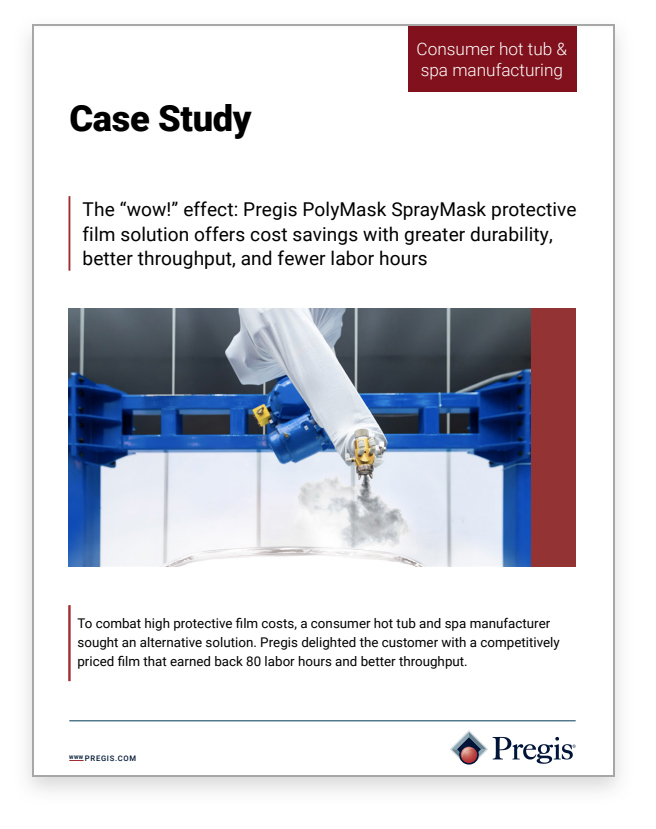Case Study: Pregis PolyMask® SprayMask Offers Cost Savings
To combat high protective film costs, a consumer hot tub and spa manufacturer sought an alternative solution. Pregis delighted the customer with a competitively priced film that earned back 80 labor hours and better throughput.
Case Study Preview
 Overview:
Overview:
This leading hot tub and spa manufacturer has built its reputation on reliability, and while their customers see a beautiful exterior finish, underneath is a critical coating that helps extend the hot tub’s life.
To apply this coating, the manufacturer’s facility utilizes robotics across its five paint booths. During this coating process, it’s imperative for the business to protect its flooring from overspray and other contaminants. Temporary protective film solutions are used as the strategic barrier during these operations.
Problem:
The manufacturer’s existing protective film solution was expensive and required replacement on a weekly basis. This replacement of new film material created regular downtime within the facility, ultimately leading to a loss in revenue potential. The operation required 8 employees and 1 hour to adequately prepare a paint booth for the next 1-week work cycle. That equated to 40 collective hours of labor across its 5 paint booths, 5 hours of weekly downtime, and a significant back up of material waiting in the queue for painting. Material costs also had a negative impact on the business. The company’s existing protective film product was 36” x 300’, which translated to a cost of $725 per roll. This exceeded their budget and created a critical need to procure a more cost-effective method for protecting the paint booth floors.
The manufacturer contacted their distributor to source an effective yet economical temporary protective film alternative.
Solution:
Pregis and the local distributor visited the manufacturer to evaluate the process for re-lining the paint booths. Through this evaluation, Pregis concluded that... the current material required replacement every 4 days due to shredding and small film tears caused by the rolling of hot tub components in and out of the booth. Despite being aware of this durability issue, the manufacturer was leaving it in place for a full week due to the high costs. The company was also requesting price relief from the supplier with no success. Instead, due to economic forces impacting the supplier, the company was asked to absorb price increases. Pregis recognized the opportunity to help this manufacturer save on costs and provide the performance they needed to be successful. As a result, Pregis recommended its PolyMask™ SprayMask protective film material to line 2 paint booths. Much to the company’s delight, the protective film was applied with the same ease as their current product. The manufacturer later sent in their team to re-apply material after one week and was very pleased to see that the Pregis material was not only more economical, but durable enough to protect the booths through another week of the painting cycle
Fill out the form to the right for the full case study!

